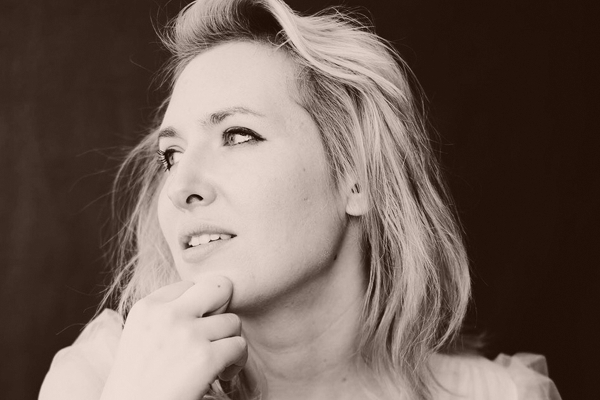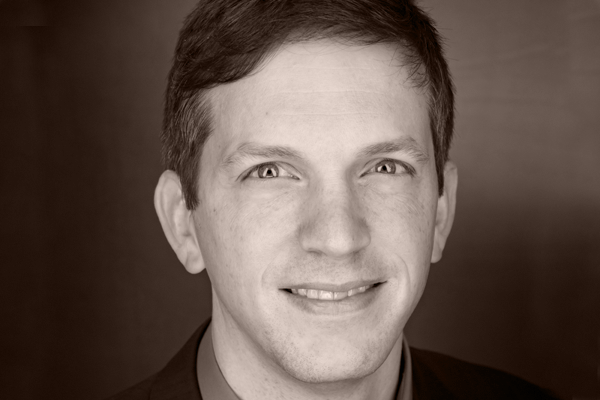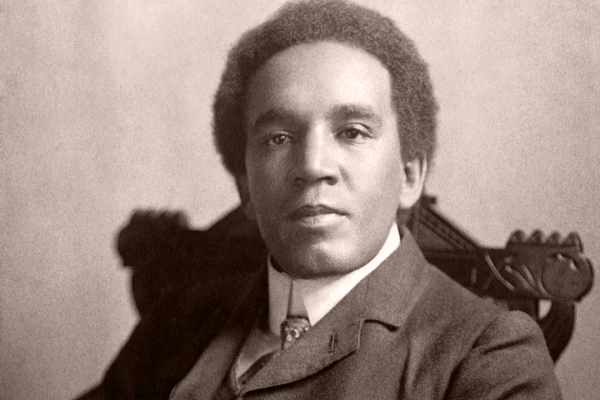The lively quintets of Prokofiev and Coleridge-Taylor join two new pieces on this concert filled with spirited music.
Please review our Health & Safety policies before arriving at the concert venue. By purchasing tickets or ticket packages, you agree that you and any guests who use your tickets will comply with these policies.
Sergei Prokofiev: Quintet
Brooks Fisher oboe | Lee Livengood clarinet | David Porter violin
Carl Johansen viola | Corbin Johnston bass
Stephanie Boyd: Pearl (world premiere)
Madeline Adkins violin | Viktor Valkov piano
Luke Dahn: Counterplay (world premiere)
Mark Davidson trombone | Viktor Valkov piano
Samuel Coleridge-Taylor: Quintet, op. 10
Erin Svoboda-Scott clarinet
Karen Wyatt, David Porter violin
Carl Johansen viola | Louis-Phillip Robillard cello
Program Notes
by Jeff Counts
Prokofiev spent the best of his exile years in Paris. He was never happy in America, even though the New World welcomed him as a celebrity in 1918 and introduced him to his future wife, Lina Llubera. In 1920, he traveled to Paris for meetings with Diaghilev and Koussevitzky. It was a smart move. The artistic careers blessed by those two kingmakers could fill volumes, and Prokofiev soon benefitted from their attention. He relocated more permanently to the French capital in 1923. It was a progressive hotbed during the interwar years, and Prokofiev responded by alternately questioning and embracing the “complex patterns and dissonances” he heard there. While working on his Second Symphony for Koussevitzky, he wrote, “I accepted a commission to compose a ballet for a roving dance troupe which wished to present a program of several short pieces accompanied by five instruments. I proposed a quintet consisting of oboe, clarinet, violin, viola, and double bass [for Koussevitzky?!]. The simple plot based on circus life was titled Trapeze.” Trapeze, full of the avant-garde sensibilities he experimented with in Paris, proved too difficult for the dancers, so Prokofiev re-cast it for the concert hall as the Quintet in G Minor, op. 39.
Pearl, a work for violin and piano by American composer Stephanie Ann Boyd, was written in 2021 on a commission from the World Sonata Project 2022: Violin as part of a collection of pieces inspired by the natural materials of the instrument itself. Boyd’s program note describes her interpretation of this idea. “Pearl takes its impetus from the violin itself;” she writes. “The shape of the violin can be seen in the curves of the melodic lines in the first phrase of the score, and the materials of the violin — its resonating body of wood and the mother of pearl inlay found in many violins — have constituted much of the inspiration for the piece.” The first movement, “Fantasia Ultraviolet”, was influenced by the way “mother of pearl light[s] up in stunning ways under UV light.” In the second, “Lux Aquae”, we first hear a “mermaid interlude” and then travel to the “watery depths” where “mother of pearl inlays began their life long before becoming part of our violins.” Finally, with “Dance Iridescence”, we experience “the magical colors and light that appear in the many layers of nacre; the material that makes up pearls” while also “perhaps speaking about the forests whose trees experienced their own long lives before being felled and whittled into the resonant bodies we know now as violins.”
Utah-based composer Luke Dahn wrote his trombone and piano duo Counterplay with two very specific local colleagues in mind, Mark Davidson and Viktor Valkov. This 2021 work was, according to Dahn, intended to “capitalize on the versatility of the trombone” to utilize “the trombone’s remarkable power” and showcase “Mark’s beautiful lyrical tone.” “The more bombastic side of the instrument,” he continues, “can be heard in the march-like theme that opens the work and is heard several times throughout, as well as the loud final section. The lighter inner sections feature more lyrical melodies that allow Mark to sing through his instrument.” The title of Counterplay is clearly meant to evoke the concept of counterpoint in music. “The two instruments are in constant dialogue throughout the piece,” Dahn tells us, “mimicking each other’s gestures and offering interjections and counter statements. Even the march is rendered in a kind of misaligned manner, creating a contrapuntal echo effect.” The pianist is not to be forgotten amidst all the trombone talk. Counterplay also happens to be a common term in the strategic theory of chess, a game for which Dahn admits “both Viktor [Valkov] and I share a love.”
Samuel Coleridge-Taylor only lived a short thirty-seven years, but his time on this earth was marked by a significant compositional profligacy. Much of his earliest work was influenced by Brahms, a fact brought into sharp focus by a challenge in 1891 from Coleridge-Taylor’s composition teacher Charles Villiers Stanford. Brahms had just written the now legendary Opus 115 Clarinet Quintet, one of his last and arguably finest chamber works. Upon hearing the masterpiece, Coleridge-Taylor immediately set to work on a reply. When Stanford got wind of the effort, he wisely dared his student to avoid direct Brahmsian inspiration. Coleridge-Taylor was game, and the resulting Clarinet Quintet in F-sharp Minor proved him worthy of the task. Stanford was thrilled for his protégé (“You’ve done it, me boy!”, he reportedly exclaimed) and showed the piece to Brahms’ friend Joseph Joachim later in 1897. Joachim read through it privately with some friends in Berlin and reportedly liked it very much. Interestingly, in avoiding the distinct voice of Brahms, Coleridge-Taylor instead invoked that of Dvořák, a composer whose career the younger man had followed passionately since his teen years.








